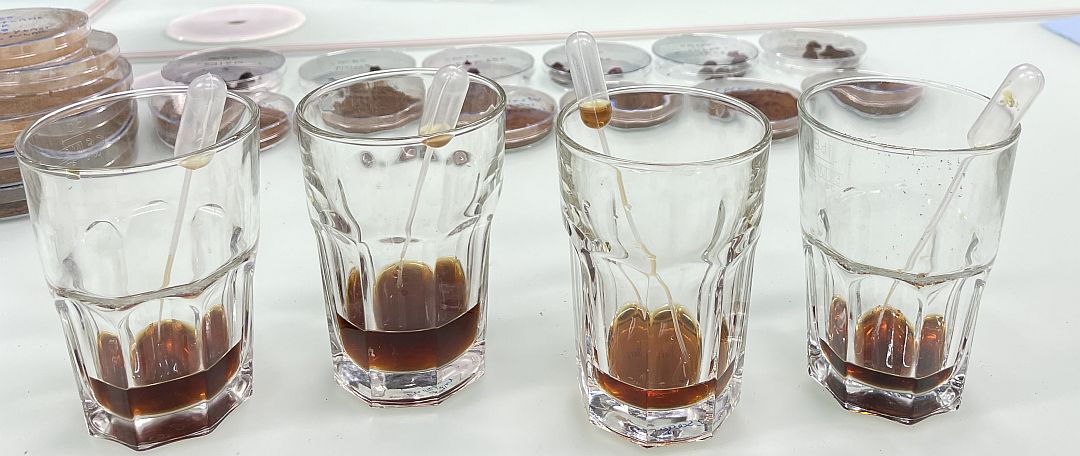Emil Von Behring is considered the “Father of Immunology” which creates some confusion as Edward Jenner is also considered the “Father of Immunology.” Either Immunology has two daddies or you can pick whichever one you like best I suppose. In any case, it was Behring’s work that created the hypothesis that there were certain components in the blood (later given the name antibodies) that protected us from toxins associated with bacteria (“viruses” were still yet to be dreamt up at that time). As with “viruses,” antibodies were unable to be seen upon their “discovery” but were instead assumed to be present in the blood.
In the late 1800’s, various experiments using numerous chemical compounds were used in attempts to create “immunity” to disease. Many of these substances were tested by Behring himself. Through his experimentation with these “disinfectant” chemicals on animals, Behring eventually theorized the presence of substances in the blood of animals previously treated (immunized) which was then transferred to other animals via injection of their blood. Not unexpectedly, there are problems with his indirect evidence presented as proof which we see immediately in the first statement from Behring’s 1890 paper with researcher Shibasaburo Kitasato:
During our long-term studies about diphtheria (Behring) and tetanus (Kitasato), we also approached the questions of therapy and immunization, and for both infectious diseases we were able to cure infected animals as well as pretreat healthy ones so that they did not fall ill of diphtheria or tetanus.
The above passage highlights that during these experiments, animals were PRETREATED in order to become “immune” to the toxins. In other words, animals were not just given the blood of previously immunized animals, they were also given therapies designed to alleviate toxicity. Digging a bit deeper, we can get a little more insight into how this was supposedly done:
Biographical
“Starting from his observations on the action of iodoform, Behring tried to find whether a disinfection of the living organism might be obtained if animals were injected with material that had been treated with various disinfectants. Above all the experiments were performed with diphtheria and with tetanus bacilli. They led to the well-known development of a new kind of therapy for these two diseases. In 1890 Behring and S. Kitasato published their discovery that graduated doses of sterilised brothcultures of diphtheria or of tetanus bacilli caused the animals to produce, in their blood, substances which could neutralize the toxins which these bacilli produced (antitoxins). They also showed that the antitoxins thus produced by one animal could immunize another animal and that it could cure an animal actually showing symptoms of diphtheria.”
https://www.nobelprize.org/prizes/medicine/1901/behring/biographical/
Behring believed that disinfecting the animals through the use of various chemicals may provide them immunity to toxins. This fact was not mentioned much in Behring and Kitasato’s original paper but was detailed in a second publication by Behring alone a week later. Behring was pretreating his cultures and animals with iodine trichloride and zinc chloride and using these substances to “disinfect” the toxins in the cultures, gradually ramping up the doses, and thus providing the illusion of “immunity:”
March 15, 1854: Diphtheria’s Foe
“After a number of failures, von Behring, working with Japanese colleague Shibasaburo Kitasato, found that by treating diphtheria-infected guinea pigs with iodine trichloride, some of the animals built up a resistance to the disease. He also found that treating an infected animal with serum taken from a successfully treated animal often resulted in a cure.
The antiserum that came out of this research would eventually rein in diphtheria, although it still appears in congested, poverty-stricken populations where sanitation is poor.
For his achievement, von Behring was awarded the first Nobel Prize for Physiology or Medicine, in 1901.”
https://www.google.com/amp/s/www.wired.com/2011/03/0315diphtheria-foe-behring/amp

It was difficult to find Behring’s original paper with Kitasato as it was in German and had not been properly translated in the medical journals. Fortunately, a book about Behring did translate some of his papers in English and I was able to provide images from it. I was unable to copy/paste the text as I normally am able to do, so I highlighted important sections in the images below. Unfortunately, it is very difficult to get a full breakdown of the methods utilized by Behring and Kitasato as they do not divulge how they obtained their cultures nor what chemicals were used. Thus, I will leave it up to the reader to decide if pretreating animals with iodine trichloride, injecting unknown culture and/or sera into the stomach of the animal and then taking the blood from it and injecting that into the stomach of another pretreated animal actually proves immunity and/or antibodies:





https://www.google.com/url?sa=t&source=web&rct=j&url=http://raolab.org/upfile/file/20200612164743_201234_56288.pdf&ved=2ahUKEwj0lerfn4jwAhXPWc0KHTxxD-sQFjADegQIBRAC&usg=AOvVaw2mnxVOwLc6ToZIGQKtNmAh

While it was not mentioned in this initial paper with Kitasato, it was later revealed that these “immune” animals were pretreated with compounds such as iodine trichloride when Behring published his own paper on his findings with diphtheria a week later. In it, he provided much more insight into the methods he used as well as how he came to his conclusions that there must be some unseen substance (antibodies) within the blood that protect against disease. Once again, I am providing images of the paper with the relevant sections highlighted:







Emil Von Behring: Infectious Disease, Immunology, Serum Therapy
Di Derek S. Linton
https://books.google.sm/books?id=n-Ee9OV6zTEC&pg=PA450&hl=it&source=gbs_toc_r&cad=3#v=onepage&q&f=false

It is clear upon reading this paper that there is no way Behring could definitively conclude that it was unseen properties in the blood which protected the animals versus either the use of the iodine trichloride, the habituation to toxins, or a combination of these factors. He treated both the cultures and the animals with these chemicals before and after injection with poison. He gradually introduced more poison while lowering the amount of iodine trichloride in the mixture. This allowed him to create the illusion of immunity while the animals built up a tolerance to the repeated injections.
Passages from this 2007 article on Behring’s use of disinfectants offers some more insight into his deceptive methods:
Emil Behring’s Medical Culture: From Disinfection to Serotherapy
“We return to Berlin for the publication in 1890 by Emil Behring and Shibasaburo Kitasato (1852–1931) of a set of experiments that introduced the possibility of rendering a rabbit immune to the toxin associated with the tetanus bacilli by injecting it with blood serum taken from an animal formerly immunized by other experimental means.”
“For Behring, iodine trichloride is a more typical disinfectant than iodoform, as it has direct anti-bacterial properties that are observable in vitro, using colonies of pathogenic micro-organisms cultured on a suitable medium. Following a series of tests that compared carbolic acid, mercury sublimate (chloride) and iodine trichloride in terms of their capacity to kill anthrax bacilli, and their toxicity in rabbits, iodine trichloride was singled out as having the most favourable ratio of disinfectant power to toxicity. Behring also took the opportunity of this article to announce the therapeutic success he had obtained by injecting iodine trichloride into the site of an earlier injection of a virulent diphtheria culture.”
“On the other, as I mentioned above, various forms of “inner disinfection” were considered promising approaches, with Behring and others attempting to cure infected animals by the internal administration of disinfectants both before and after infection.”
“If the injection of hydrogen peroxide, for example, could, by means of some form of internal disinfection, protect an animal against the lethal effects of diphtheria and thereby help to render it immune, then the technique could potentially serve to produce serum for treating other animals or even humans suffering from the disease. Thus, rather than taking the risk of injecting diphtheria patients with hydrogen peroxide directly, there now existed the apparently safer possibility of using the same procedure in animals in order to generate a serum for human administration. In the end, Behring’s favoured technique for inducing immunity—the essential preliminary for extracting the therapeutic serum—was not any form of inner disinfection, however, but the pre-treatment of a diphtheria culture (and later the toxin) using iodine trichloride. This manipulation rendered the culture or toxin less deadly and thereby facilitated the process of immunization. Following this initial stage, Behring successively reduced the iodine trichloride concentration in subsequent injections of toxin, until the animal could eventually be exposed to untreated toxin, thereby completing the process of artificial immunization.”
https://www.ncbi.nlm.nih.gov/pmc/articles/PMC1871706/
Artificial immunization required the manipulation of the culture and toxin by pretreatment with iodine trichloride which rendered them less toxic and deadly. The gradual reduction of iodine trichloride in successive injections completed the “immunization.” However, Behring even admitted that immunity was not permanent and that unfavorable conditions left the animals to the same disease as if they had not been immunized. Essentially, the process Behring employed amounted to habituating the animals to increasing levels of poison, an idea that Kitasato favored, and not Behring’s idea of unseen substances in the blood being transferred from animal-to-animal. How these experiments on animals and the assumptions made from them could possibly apply to humans or be considered proof of antibodies is beyond understanding. Behring was actually very clear they should not be applied to humans, and for good reason it seems:
MonoclonalAntibodies in Medicine
History of passive immunisation
“The first use of passive immunisation is thought by some to have been on Christmas night 1891. The recipient is reported to have been a young boy in Berlin with diphtheria who was cured by injection of diphtheria antitoxin, although this cannot be proved today. Passive immunisation is based on work carried out by Emil Behring and Shibasabura Kitasato from Robert Koch’s Hygiene Institute in Berlin. On 4 December 1890 Behring and Kitasato published a landmark article in which they showed that serum from an animal actively immunised against diphtheria toxin could be used to neutralise even a fatal dose of the toxin in another animal. The same results were obtained with tetanus toxin, and the effects of these sera were shown to be specific in that tetanus antitoxin did not protect against a challenge with diphtheria
toxin.”
“A major problem with passive serotherapy was its toxicity. Anaphylactic reactions often occurred after giving horse serum and serum sickness (fever, rashes, and joint pains) was common. Behring believed that the antitoxin effect resided in the protein fraction of the serum and went on to show that ammonium sulphate precipitated a fraction (now known as gammaglobulin) that retained antitoxin activity. Precipitation reduced side effects but did not completely overcome the problem of serum sickness, which is now known to result from the deposition of circulating immune complexes. Cleavage of gammaglobulin by pepsin further reduced the incidence of serum sickness.”
doi: 10.1136/bmj.305.6864.1269

As can be seen, the use of passive immunization with antibodies generated by horse (or other animal) blood can lead to serious and deadly side effects mimicking both of the symptoms of diphtheria and tetanus. The deadly nature of these treatments is demonstrated by this next passage detailing the death of an infant who was pre-treated with Behring’s serum out of fear that the child might come down with diphtheria from a house maid:
Remembering Emil von Behring: from Tetanus Treatment to Antibody Cooperation with Phagocytes
“The first indications that serum therapy could cause adverse events also appeared, although Behring considered his serum innocuous. In 1896, a healthy infant was prophylactically treated with diphtheria serum because the housemaid had fallen ill of diphtheria. The child likely died of an anaphylactic reaction to the foreign serum, and in the obituary, the saddened father—a well-known pathologist—stated that this was “due to the injection of Behring’s serum for immunization.”
https://mbio.asm.org/content/8/1/e00117-17

In Summary:
- Behring and Kitano claimed that they were able to cure infected animals as well as pretreat healthy ones so that they did not fall ill of diphtheria or tetanus
- In this paper, immunization against diphtheria was only briefly mentioned
- Starting from his observations on the action of iodoform, Behring tried to find whether a disinfection of the living organism might be obtained if animals were injected with material that had been treated with various disinfectants
- In 1890 Behring and S. Kitasato published their discovery that graduated doses of sterilised brothcultures of diphtheria or of tetanus bacilli caused the animals to produce, in their blood, substances which could neutralize the toxins which these bacilli produced (antitoxins)
- Von Behring experimented initially with iodine trichloride and zinc chloride as potential treatments for diphtheria and tetanus infections
- After a number of failures, von Behring, working with Japanese colleague Shibasaburo Kitasato, found that by treating diphtheria-infected guinea pigs with iodine trichloride, some (i.e. not all) of the animals built up a resistance to the disease
- The antiserum that came out of this research would eventually rein in diphtheria, although it still appears in congested, poverty-stricken populations where sanitation is poor

- A rabbit was “immunized” against tetanus in an undisclosed way
- The blood from these rabbits were drawn and injected into the stomachs of mice
- 2 mice were inoculated with a tetanus culture 24 hours later and survived
- 6 mice were inoculated with coagulated blood from rabbits and infection that developed 24 hours later had no effect on them while control mice died 48 hours later (why only the 24 hour follow-up for “immune” mice?)
- They mixed blood from rabbits with toxin-containing culture and allowed it to sit for 24 hours
- The mice getting either serum alone or serum with toxin remained immune as far as they could tell
- Physiological saline was considered to have the same healing effects

- Through repeated experimentation, it was determined mice and rats are naturally immune to Diphtheria
- Behring proposed 5 ways to immunize animals:
- The use of sterile cultures can render animals immune in 10-14 days
- Adding iodine trichloride to 4-week-old cultures and letting it sit for 16 hours, injecting it into the abdominal cavities of Guinea pigs, then gradually increasing the toxin dose over time while decreasing the iodine trichloride in each successive dose
- Metabolic processes in the blood of animals already immunized produced either an amber yellow, colorless, or bloody transudate that did not contain diphtheria bacilli yet was still toxic to Guinea pigs to varying degrees
- When the non-bloody transudate was injected subcutaneously and intra-abdominally, most Guinea pigs died of a widespread hemorragic edema at the injection site
- The ones that did not die were watched until they were considered healthy again and were inoculated with enough toxin which could kill Guinea pigs normally within 3-4 days
- Infect the animal with toxin and then immediately eliminate the negative effects through therapeutic treatments such as gold salts, naphthylamine, trichloracetic acid, carbolic acid, and iodine trichloride
- Behring claimed he was not stating iodine trichloride can cure diphtheria in humans, only in the animals he experimented on
- He then assumed that he did not make the animals immune solely by the use of iodine trichloride
- The use of hydrogen superoxide had a greater capacity to confer resistance to diphtheria infection and protect rabbits from otherwise deadly amounts of culture than did the unseen metabolic properties in the blood
- However, animals given hydrogen superoxide directly AFTER infection died more rapidly than control animals
- Thus Behring decided to pretreat the animals with hydrogen superoxide before inoculation
- Behring then described experiments with 5 rabbits pretreated with hydrogen superoxide
- 4 of the rabbits died after a period of days yet one survived and somehow Behring concluded it was immune
- Behring stated that all 5 of the proceeding methods for immunization are unusable on humans
- He also stated that immunity can be lost after repeated injections of substantial amounts of poison
- Guinea pigs standing under the influence of poisonous germ-free diphtheria culture under unfavorable conditions succumbed to diptheria just as if they had never been immunized
- Behring argued that his experiments do not show the resistance to poison through becoming habituated to the poison but rather that unseen metabolic properties confer immunity
- He stated that despite carefully raising the doses of the poisons from the entirely harmless to higher, he could not succeed in protecting the animals against diphtheria poison even to the extent that they could tolerate a little more of it than normal
- Behring concluded that there are special unseen metabolic properties in the blood
- He tested his theory by taking the blood of rats that had been injected in their abdominal cavities with diphtheria poison 3 hours earlier and injecting it into the abdominal cavities of Guinea pigs
- He stated that since the Guinea pigs did not get sick from the blood of animals considered immune to diphtheria but did become sick when injected with the blood from animals not considered immune, his theory was correct

- Behring and Kitasato introduced the possibility of rendering a rabbit immune to the toxin associated with the tetanus bacilli by injecting it with blood serum taken from an animal formerly immunized by other experimental means
- For Behring, iodine trichloride is a more typical disinfectant than iodoform, as it has direct anti-bacterial properties that are observable in vitro, using colonies of pathogenic micro-organisms cultured on a suitable medium
- Following a series of tests that compared carbolic acid, mercury sublimate (chloride) and iodine trichloride in terms of their capacity to kill anthrax bacilli, and their toxicity in rabbits, iodine trichloride was singled out as having the most favourable ratio of disinfectant power to toxicity
- In other words, iodine trichloride was the least toxic of the chemicals tested
- Various forms of “inner disinfection” were considered promising approaches, with Behring and others attempting to cure infected animals by the internal administration of disinfectants both before and after infection
- Rather than taking the risk of injecting diphtheria patients with hydrogen peroxide directly, there now existed the apparently safer possibility of using the same procedure in animals in order to generate a serum for human administration
- In the end, Behring’s favoured technique for inducing immunity—the essential preliminary for extracting the therapeutic serum—was not any form of inner disinfection, however, but the pre-treatment of a diphtheria culture (and later the toxin) using iodine trichloride
- This manipulation rendered the culture or toxin less deadly and thereby facilitated the process of immunization
- Following this initial stage, Behring successively reduced the iodine trichloride concentration in subsequent injections of toxin, until the animal could eventually be exposed to untreated toxin, thereby completing the process of artificial immunization (i.e. habituation to poison)
- The first use of passive immunisation is thought by some to have been on Christmas night 1891
- The recipient is reported to have been a young boy in Berlin with diphtheria who was cured by injection of diphtheria antitoxin, although this cannot be proved today
- A major problem with passive serotherapy was its toxicity
- Anaphylactic reactions often occurred after giving horse serum and serum sickness (fever, rashes, and joint pains) was common
- In 1896, a healthy infant was prophylactically treated with diphtheria serum because the housemaid had fallen ill of diphtheria
- The child likely died of an anaphylactic reaction to the foreign serum, and in the obituary, the saddened father—a well-known pathologist—stated that this was “due to the injection of Behring’s serum for immunization.”

Behring stated resistance to poison due to habituation to the poison could be assumed to grant “immunity,” however he was forcefully against the idea. Unlike his partner Kitasato, Behring was adamant that it was not the pretreatment nor the gradual incline in doses of toxins given to the animals that gave the impression of “immunity” but was instead an invisible substance in the blood. As with “viruses,” the invisible substance (antibodies) must be taken by faith alone as there was no visual proof for its existence, just the usual indirect observations.
Beyond the problem of pretreatment of the animals, there is another more glaring issue with the experiments and conclusions regarding the bacteria studied. Both diphtheria and tetanus are found in healthy people, hence the fact that most of the cases are asymptomatic:
Diphtheria:
“Most infections are asymptomatic. The disease can gain access to the body through the throat (pharyngeal diphtheria) or through skin lesions (cutaneous diphtheria). Spontaneous healing can occur but other patients will go on to develop invasive disease with heart block and paralysis (both cranial and peripheral). The incubation period is typically between 1 to 7 days.”
Tetanus:
“Typically, illness is asymptomatic or mild in the vast majority of infected persons, with a small proportion experiencing severe disease.”
https://www.google.com/url?sa=t&source=web&rct=j&url=https://www.nicd.ac.za/wp-content/uploads/2017/06/TetanusFAQ_20170601.pdf&ved=2ahUKEwi28-qrg4bwAhUKV80KHVRhDTYQFjABegQIBBAG&usg=AOvVaw2vKVwVfJyyhKYcgzAt8rcC
Asymptomatic means:
“not causing, marked by, or presenting with signs or symptoms of infection, illness, or disease”
https://www.merriam-webster.com/dictionary/asymptomatic
As both of these bacteria are found in healthy people, it can be seen that they were not the causes of disease as they fail Koch’s first Postulate:
- The microorganism must be found in abundance in all cases of those suffering from the disease, but should not be found in healthy subjects.
If these bacteria are not the true cause of the diseases they are associated with, what exactly were Behring and Kitasato “immunizing” against? Why did the serum treatments create the same exact symptoms that they were supposed to prevent? It seems that this is another case in the long history of germ theory where the treatment based on theoretical entities is worse than the supposed disease.
Source link
Author Mike Stone







